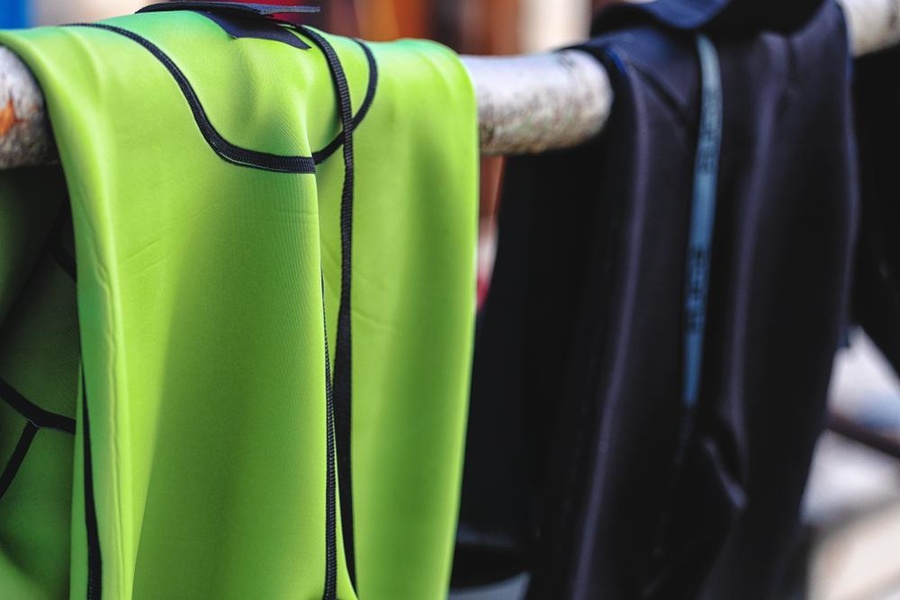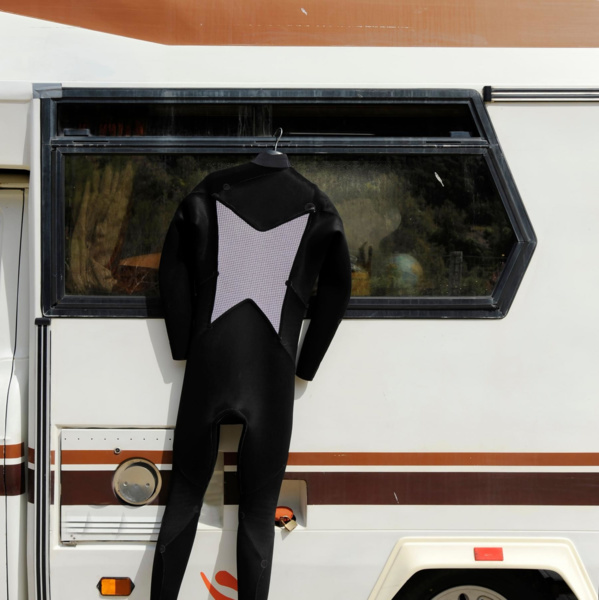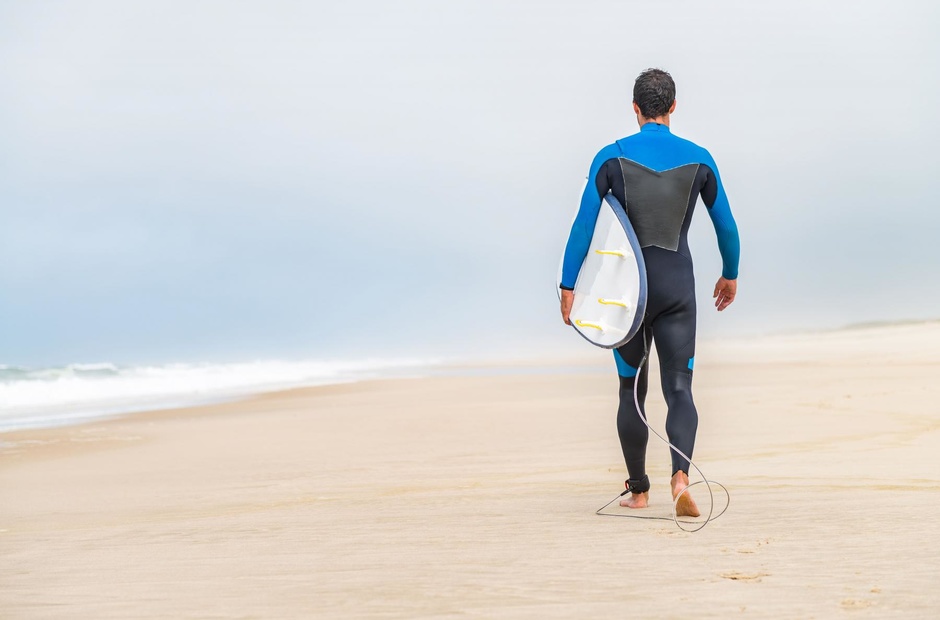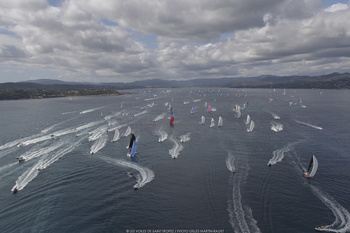The suit provides thermal insulation for your body, allowing you to yacht, surf and dive in a wide variety of weather conditions, and protects your skin from irritation caused by the sand and wax that covers the board. This means you can stay in the water longer.
Before choosing a suit, it's important to consider a number of factors. In this article we want to offer you some starting points for your search.
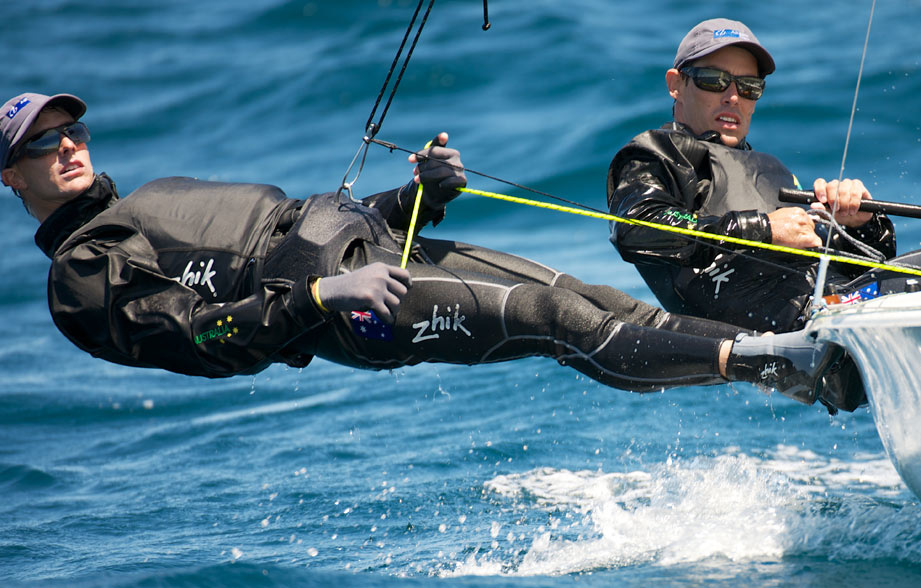
Which diving suit is right for you?
Before you buy a wetsuit, carefully analyze your own needs. What time of year do you intend to use it? Where will you ride? What is the climate and weather in this region? Summer and winter surfing and yachting require different lengths of suit and thickness of material.
Dependence of the thickness of the costume on the climate
Think about the weather conditions that await you in the ski area and make your choice. If you plan to practice water sports in a warm climate, a spring wetsuit - shorter and made of thinner material - may be the best choice. In colder conditions, you will need a long suit that covers the entire body surface from your chin to your wrists and ankles.
The cold threshold is different for all people. However, remember that if you do not keep your body warm, you will shorten your time in the water.
A 4/3mm thick wetsuit with a glued seam will keep you comfortable at moderate to lower temperatures (55-65 degrees Fahrenheit, 13-18 degrees Celsius). If you tolerate cold particularly well, a thickness of 3/2 mm may be sufficient.
With warm water of 66-70 degrees (19-21 degrees Celsius) a spring suit of 2/1 and 3/2 thickness will be useful.
At 21 degrees Celsius or higher you may be comfortable wearing a bathing suit alone or in combination with a lightweight hydro jacket and/or Rashgard, which protects you from the sun and irritation from wax.
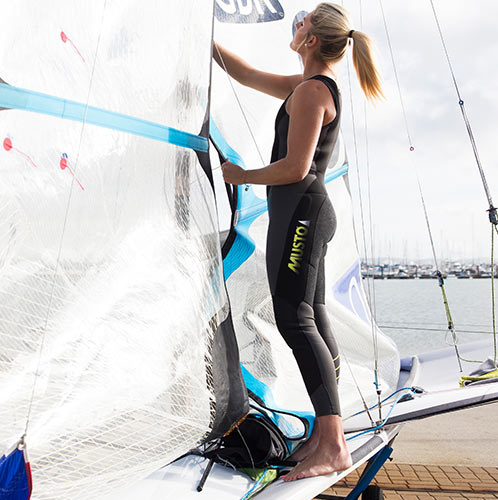
In cold weather you may need a woollen wetsuit, but this option is more expensive and requires careful and extremely gentle care. Athletes who regularly swim in very cold water may need a waterproof wetsuit and accessories such as a hood, water shoes and gloves.
Types of modern neoprene
Water suits are made of synthetic rubber - neoprene, which keeps warm thanks to thousands of air pockets that keep a layer of water between the skin and the suit itself. In addition to creating an insulating barrier, the neoprene is also floating, wearable, elastic and resistant to heat, UV radiation, friction, fire and many chemicals.
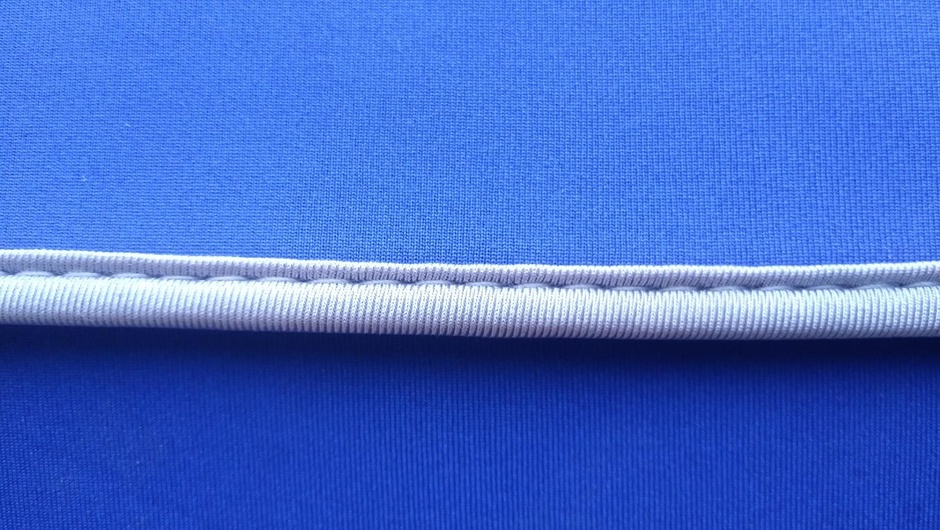
Neoprene with a nylon layer. All basic wetsuits are now equipped with a layer of nylon fabric, which makes it easier to put them on and off, and protects the neoprene from wear under the influence of natural elements.
Polished neoprene (neoprene "smooth skin"). This fairly common material retains heat from the body and sun without letting in water or wind. Water suits designed for cold weather often have inlays of smooth neoprene on the chest and lumbar area, which ensures that body warmth is maintained even in cold and windy weather. The downside of these features, however, is reduced wear resistance: this material can tear if touched by something hard and rough such as nails.
Airborne neoprene is only found on the most advanced models. This technology includes an additional layer of fabric that adds heat to wet suits without thickening or weighing them down.
Yulex is a vegetable-based neoprene, which is comparable in heat and elasticity to non-plant fabrics, but is more environmentally friendly and suitable for those who care about the environment.
Size and fit
Landing is an equally important parameter. If a suit is out of shape, it will not work...
A properly seated wetsuit should fit very tightly to the body. Otherwise, water will penetrate into the space between the wetsuit and your body, and you will not be protected from cold. At the same time, a wetsuit that is too tight will not fit and will restrict movement and blood circulation. A suit should envelop your body tightly, leaving no free space, but allowing you to move your hands freely.
Some types of materials stretch over time, so if a suit fits tightly from the beginning, it will last longer. Also check the length: a full length suit should reach the ankles.
Talk to your store consultants and try on different models. Be prepared to make an effort: in a wetsuit is not so easy to get into, but later you will be glad that you did not miss this stage.
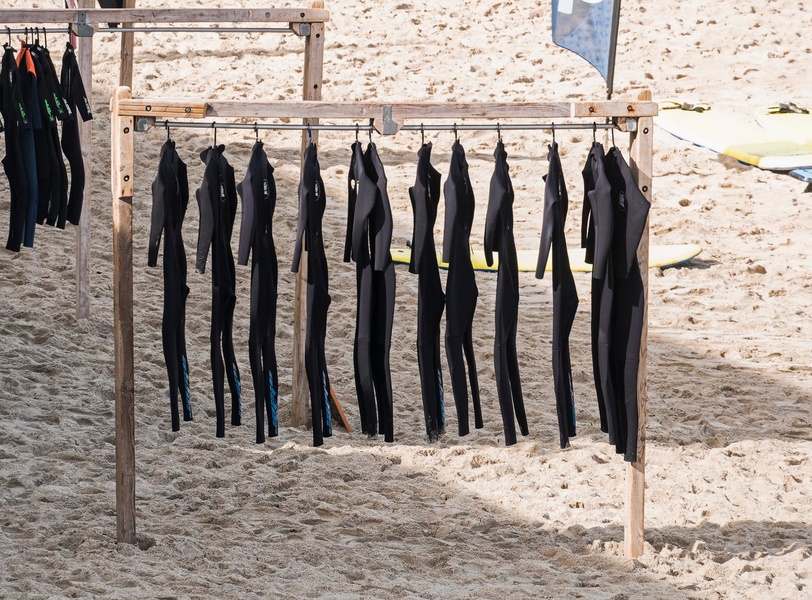
Check the elasticity of the suit, move a little, is there enough space in the hips, groin, arms and shoulders area? Take your time. No matter if you are ready to pay a tidy sum for a top wetsuit or are looking for a budget option, the suit will have little leeway if it does not sit on you properly.
When you check the suit's fit, think about what you plan to wear it with and on top. Some people prefer to wear a swimsuit, neoprene shorts, Lycra thermal underwear or rashgard under a wetsuit for extra insulation, or wear a wetsuit over it if it's cold and windy outside.
Check all parts directly in the store. Have the seams been made thoroughly or do they look untidy and loose? As for suits with glued seams, does the gluing securely hold the suit? Does the zipper move smoothly and easily in both directions? These details have a big impact on the wearing time of a wetsuit.
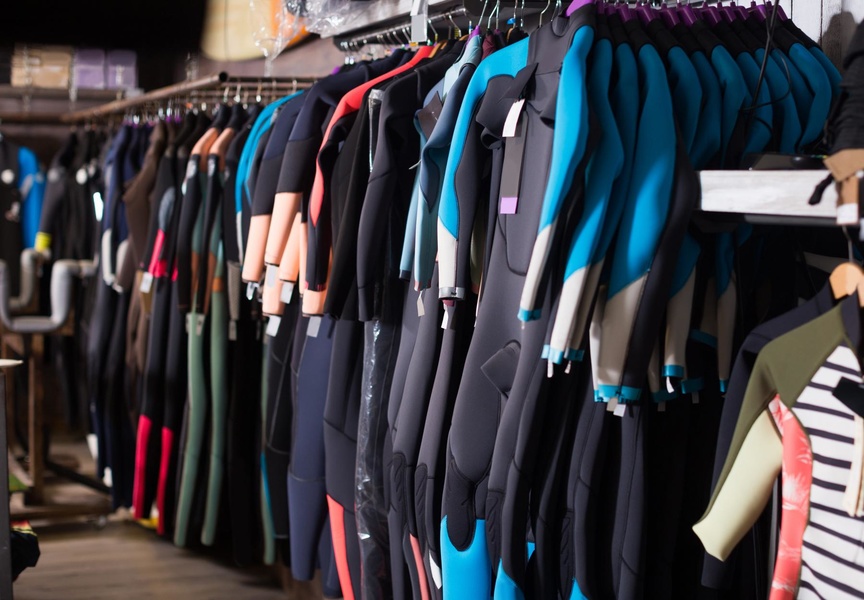
Stitches, seams and zippers
The quality of seams and stitches is an important element of a wetsuit. The stitching of a high quality wetsuit is so carefully made that even tiny holes in the neoprene do not impede the ability of the wetsuit to retain body heat.
Types of stitching:
Overlock is the simplest and least effective type of wet suit stitching, which is mainly found on inexpensive models suitable for warm weather. Parts of the material are rolled up and then stitched together, resulting in a voluminous seam that is not elastic.
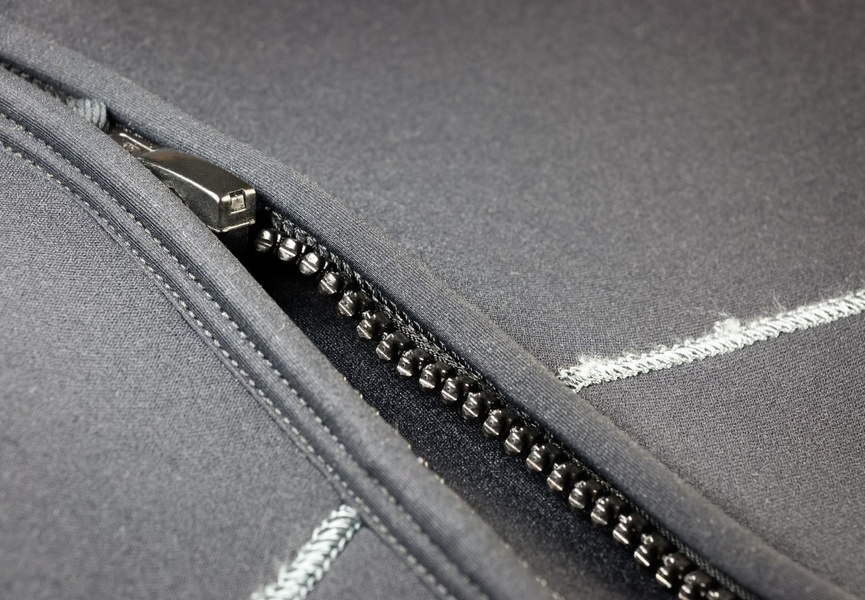
Flat Stitch (Flatlock) is made through two layers of neoprene, which are placed one on top of the other, rather than being rolled, resulting in a strong and flexible joint. However, this method is less effective in terms of preventing water seepage and is better suited for summer suits.
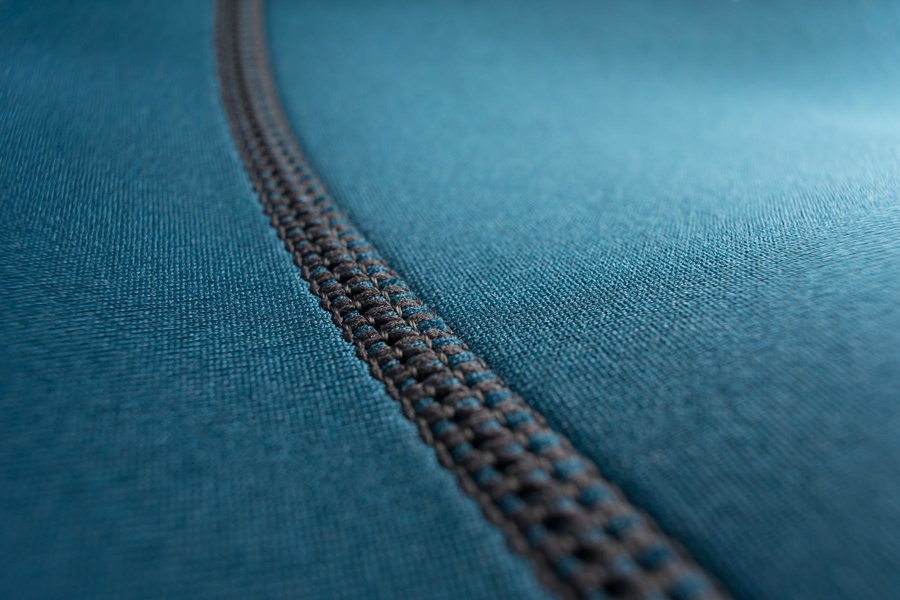
Blindstitch involves placing layers of fabric on top of each other and gluing them together, after which only the outer edges of the parts are marked, not stitching through the entire fabric area. The result is that the stitches are both elastic and waterproof - a property that expresses itself in a higher price but is optimally suited for surfing in cold water. Double blind stitch marks the same process, but the stitching is done on both sides of the fabric.
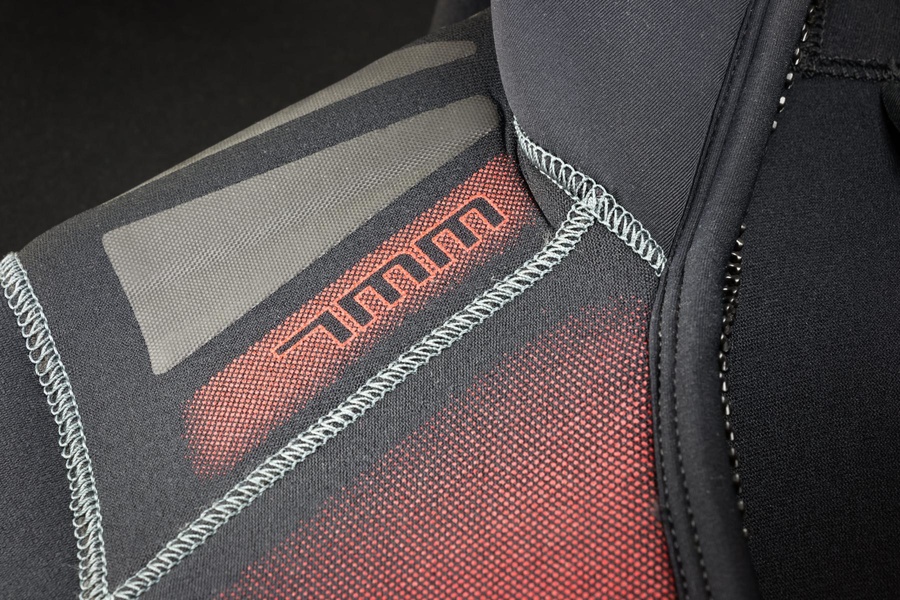
The stitches:
Sealing the seams of a wetsuit is another factor that plays a significant role in achieving the water repellency and comfortable wearing and movement functions of a wetsuit.
The glued seams are first bonded and then sewn together, resulting in a reliable seal and water repellent.
Soft glued seams involve bonding in individual areas of the suit that require additional reinforcement.
Fully glued seams denote seams that are glued over the entire length.
Types of zip fasteners:
A zipper on the back makes the opening for putting on and taking off a suit wider, but the middle back buckle reduces elasticity and limits the movement of the hands. The zipper on the front eliminates the problem of elasticity and does not restrict the movement of hands. The disadvantage is that it is difficult to put on and take off. Suits without zippers are the most elastic and stretchy, but they are difficult to put on and take off.
Wetsuit care
No matter how much money is spent on a suit or how carefully it is cared for, the maximum period of good quality service is only about five years, and you can't count on more. However, the care of a suit is still important to ensure that it stays in good condition for as long as possible.
- Always wash your wetsuit. After each use, rinse the suit thoroughly with cold water, both inside and outside, to wash all accumulated sand and dirt (however, it is better to try to remove sand before rinsing to avoid clogging the water system). Keep in mind that hot water can reduce the quality of the material. Avoid washing in the washing machine and any chemical detergents, soaps or laundry conditioners that are not directly designed for wetsuits. Choose products specifically suitable for neoprene or use baby shampoo.
- After washing, hang the suit out of the sun's reach. Prolonged contact with the sun will shorten the life of a wetsuit, so it is better to hang it in the shade or indoors. If you need the material to dry quickly, be sure to turn it inside out to protect the outer material and color of the suit. Hang your suit on a hanger behind your waist, not on your shoulders, to avoid stretching the material.
- Remove the wax with cold water. Soak your suit in a bucket of icy water until the paraffin hardens to such an extent that it can be cleaned in small portions. Wax should only be removed by hand, do not use a brush.
- Store your suit properly. For longer storage, hang the suit on a hanger (again, behind the waist, not on the shoulders). Folding the costume will cause folds. A special hanger for a wetsuit will help to prolong the life of your costume and keep its shape.
